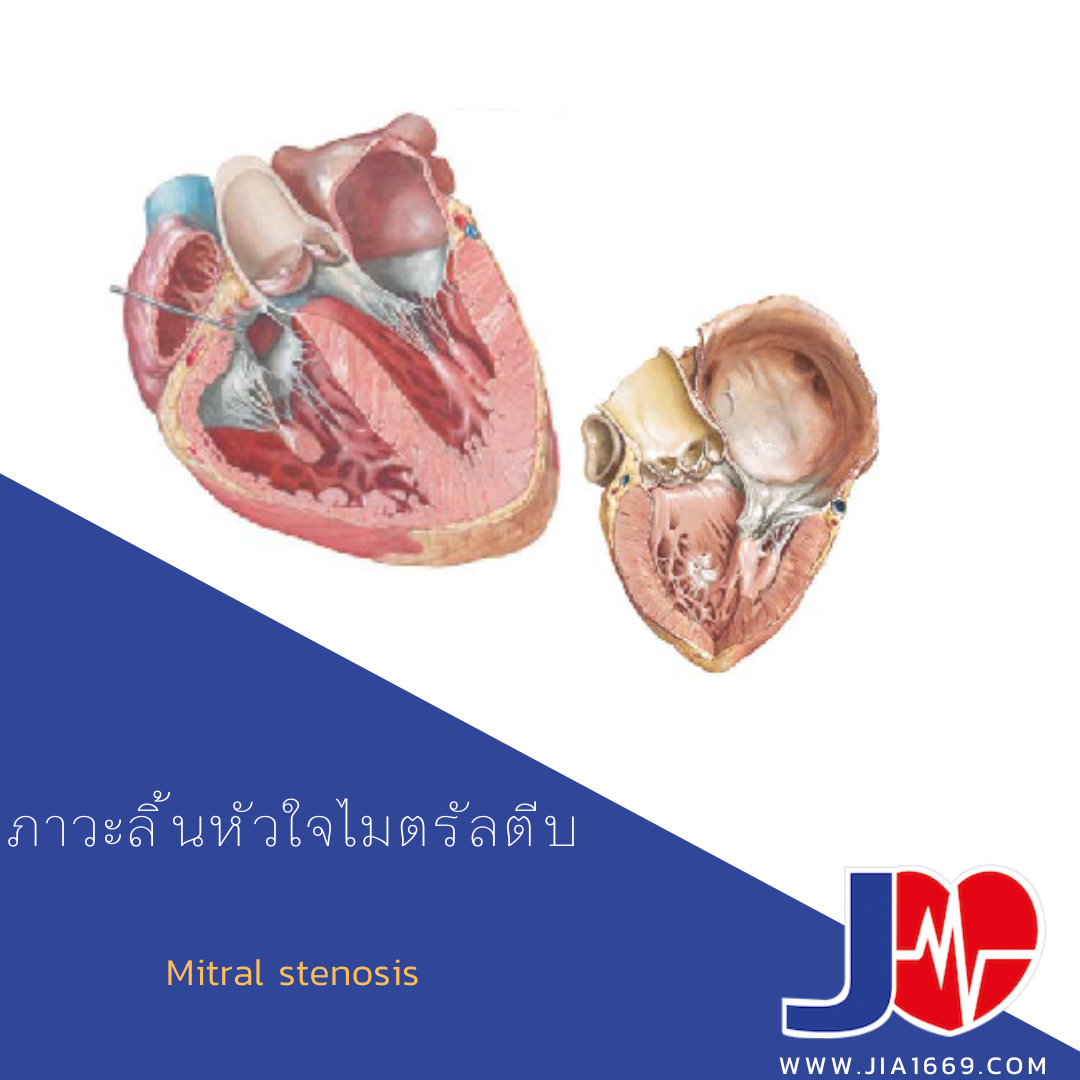Mitral stenosis
Last updated: 6 Aug 2024 | 16122 Views |


![]()
Mitral stenosis
It is a narrowing or blockage of the mitral valve located between the left atrium. The ventricle is the left ventricle (one of the upper chambers of the heart) and the left ventricle (one of the lower chambers in the heart). It has to be pumped harder to allow blood to flow into the left lower abdomen. if the left atrium is unable to squeeze out all the blood Blood returns to the right side of the heart. and back into the lungs. Mitral valve stenosis is more common in women than men and is a leading cause of heart failure.
cause
The cause may be scarring of the heart valves from rheumatic fever. that happened before Usually born in childhood, arthritis, fever is caused by a bacterial infection. (Streptococcus or strep). Other causes include congenital heart disease. Calcium on the tongue and infection.
symptom
Symptoms include wheezing (especially when lying down), swelling (edema) in the legs and fatigue. Other symptoms may include irregular heartbeats, coughing up blood, and chest pain. If the heart beats irregularly, called atrial fibrillation, the atrium doesn't contract normally. So the blood in the atrium Blood clots may form and move from the heart to the brain. and cause cerebrovascular disease
diagnose
Doctors can diagnose by listening to the heart. Blood moves abnormally through the mitral valves and produces a sound called murmur. Doctors hear it through a stethoscope. The time and location of the murmur helps doctors determine which heart valves are affected. sonogram of the heart An echocardiogram can confirm the diagnosis, other tests, chest X-rays, and ECG.
treat
for mild symptoms will try to prevent complications from medication. When the pill is no longer Mitral valve surgery in order to expand or replace
should not![]() Your medication should be taken exactly as prescribed.
Your medication should be taken exactly as prescribed.![]() Eat foods that are moderate in sodium.
Eat foods that are moderate in sodium.![]() Tell your doctor if you have any side effects from your medication.
Tell your doctor if you have any side effects from your medication.![]() Tell your doctor if you have new or worsening symptoms such as chest pain, trouble breathing, or swelling in your legs.
Tell your doctor if you have new or worsening symptoms such as chest pain, trouble breathing, or swelling in your legs.![]() Tell your doctor if you are taking anticoagulants and have a wound that doesn't stop bleeding.
Tell your doctor if you are taking anticoagulants and have a wound that doesn't stop bleeding.![]() Do not ignore the worsening symptoms.
Do not ignore the worsening symptoms.

Related content
Percutaneous Coronary Intervention
23 Jun 2025
Tetralogy of Fallot
21 Sep 2022
Coronary Artery Bypass Surgery
23 Jun 2025
Atrial Myxoma
18 Aug 2022












